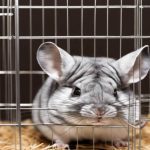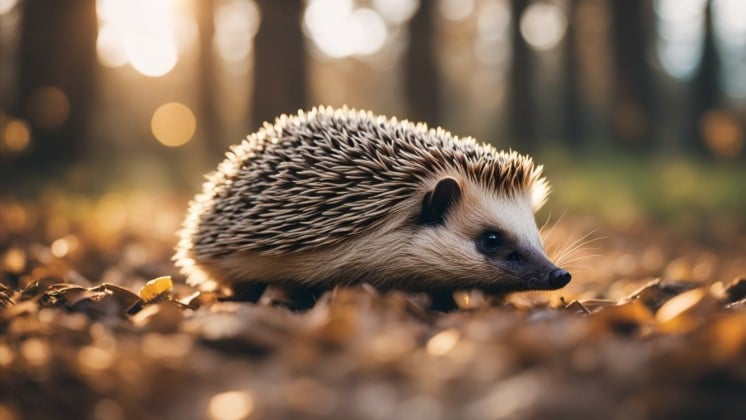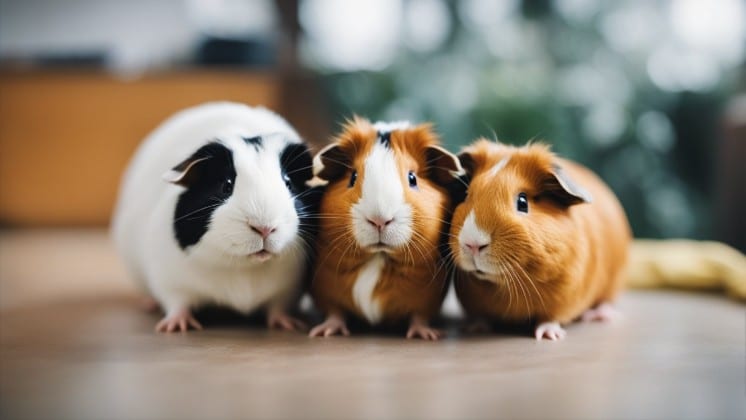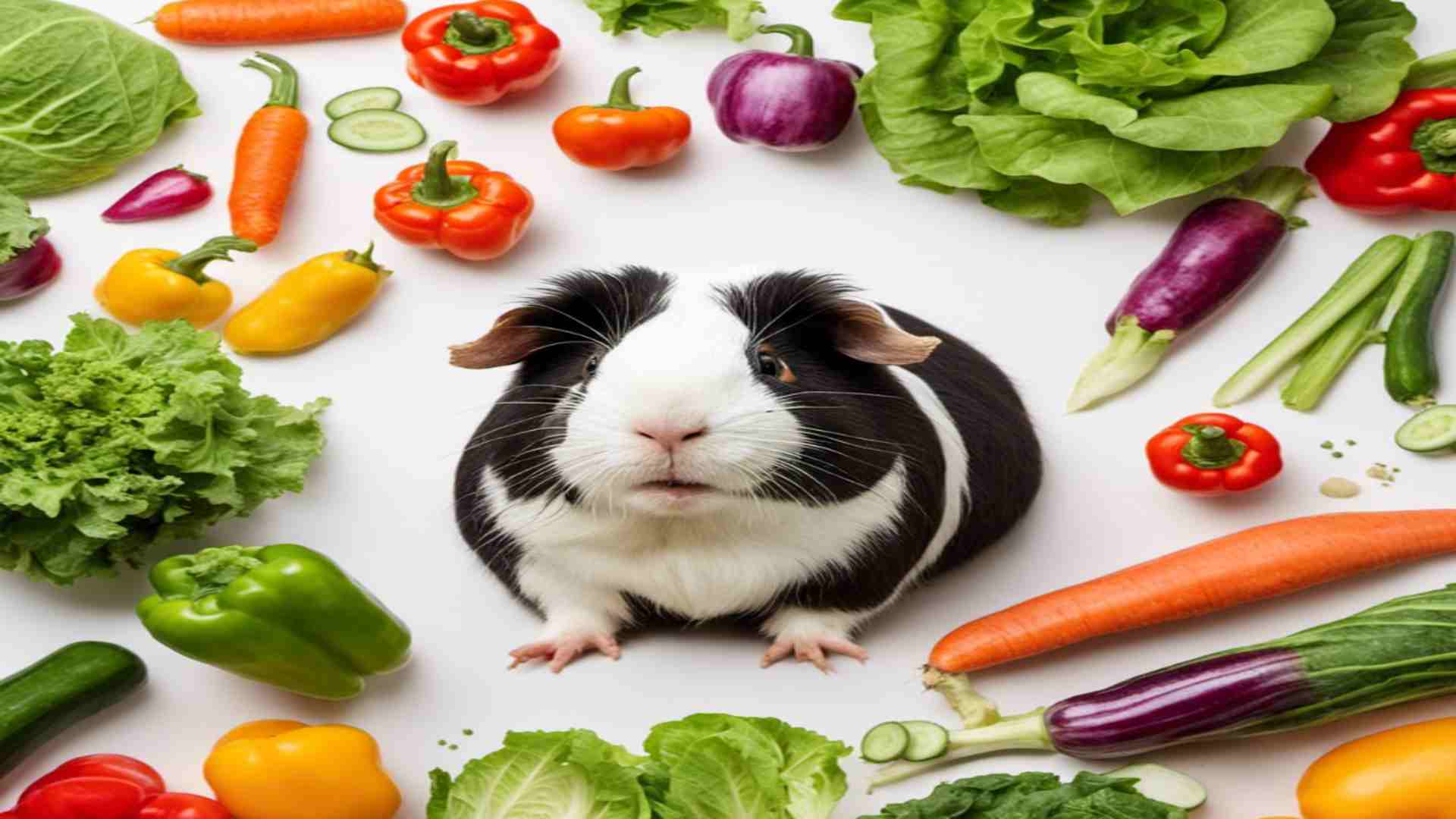Are you considering getting a chinchilla? Chinchillas are incredibly cute, playful animals that make great pets. But before you bring a chinchilla home, it’s important to make sure you have the right cage for your new friend.
In this article, we’ll provide expert advice on how big of a cage your chinchilla needs and other tips for creating an ideal living space.
Let’s begin!
What size cage does a chinchilla need?
A good size cage for a chinchilla should be at least 2 feet by 2 feet by 2 feet (60 cm x 60 cm x 60 cm). However, the larger the cage, the better it is for your chinchilla’s overall health and well-being.
Chinchillas are active animals and require plenty of space to move around, play, and exercise. The cage should also be made of sturdy and safe material, such as metal wire or plastic, and have multiple levels and platforms for your chinchilla to climb and explore.
When choosing a cage for your chinchilla, make sure it has plenty of vertical space, with multiple levels and ledges throughout the cage.
Chinchillas are excellent climbers and jumpers, so they need a cage that allows them to use their natural abilities. Also, make sure the cage is made of safe materials and has a solid floor to prevent foot injuries.
What is a good size cage for a pair of chinchillas?
A good size cage for a pair of chinchillas should be at least 3 feet by 2 feet by 2 feet (or 91 cm by 61 cm by 61 cm) in size.
It should also have multiple levels for the chinchillas to climb and play on, as well as plenty of space for them to run around and exercise.
Also, keep in mind the cage should be made of wire mesh with a solid floor and should be lined with bedding material that is safe for chinchillas, such as paper-based bedding or aspen shavings.
When housing two chinchillas together, it’s important to provide plenty of hiding places and separate areas for each chinchilla to sleep and eat.
This will help prevent fights and ensure both chinchillas have their own space.
Good to know: Ensure the cage has plenty of toys and accessories to keep both chinchillas entertained.
That said, these are general guidelines; in fact, bigger cages are always better, so if you have the space, consider getting a larger cage.
Chinchilla cage setup
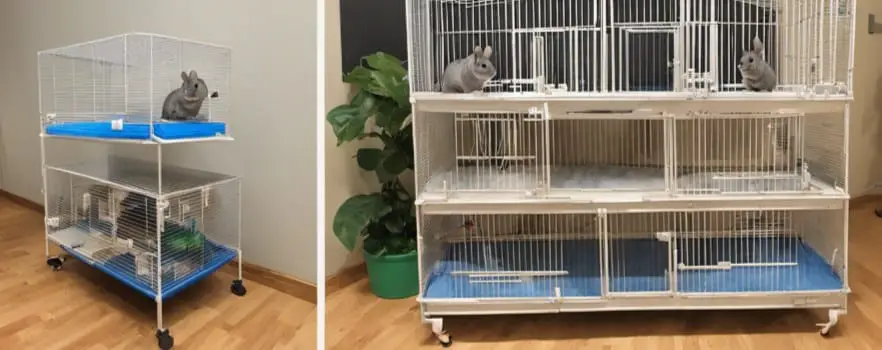
When setting up a chinchilla cage, there are a few key factors to consider to ensure your pet’s happiness and health.
In this section, we will discuss the placement of shelves and levels, as well as providing hiding and resting spaces.
1. Placement of shelves and levels
Chinchillas love to climb and jump, so it’s important to provide them with multiple levels in their cage.
When placing shelves and levels, make sure they are securely fastened and spaced appropriately for your chinchilla’s size.
A dual-level cage, such as the Critter Nation 2 Cage, is a great option for chinchillas as it provides ample space for climbing and jumping.
Read also: Critter nation chinchilla cage review
It’s important to note that the spacing between levels should not exceed 12 inches, as chinchillas can injure themselves from falls.
2. Providing hiding and resting spaces
Chinchillas are burrowing animals and need a safe and comfortable space to rest and hide. Providing hiding boxes or dens in their cage is essential for their mental and physical well-being.
A nest box or hiding box should be large enough for your chinchilla to comfortably move around in and should be made of a chew-resistant material.
Fleece liners are a great option for lining the bottom of your chinchilla’s cage, as they are soft and comfortable for your pet to rest on.
Cage accessories and toys
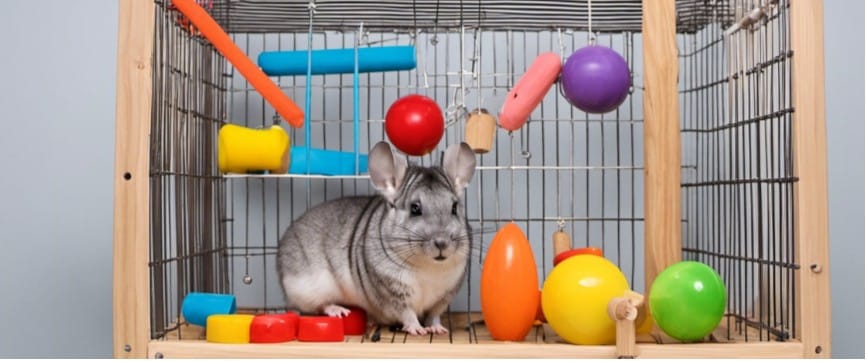
When it comes to chinchilla cage accessories and toys, there are a few things to keep in mind.
First, you want to make sure that any accessories or toys you add to the cage are safe for your chinchilla to use.
Second, you want to choose items that will help keep your chinchilla mentally and physically stimulated.
Here are some of the most important cage accessories and toys to consider:
Feeding accessories
A water bottle and food bowl are essential accessories for any chinchilla cage. Water bottles are a great way to provide your chinchilla with fresh, clean water that won’t spill or get contaminated.
Make sure to choose a bottle that is the right size for your cage and easy to refill and clean.
Food bowls are also important because they allow you to provide your chinchilla with various foods.
Choose a bowl that is heavy and won’t tip over easily, and make sure to clean it regularly to prevent bacteria growth.
Hay feeders are another important accessory for chinchillas. These feeders allow you to provide your chinchilla with fresh hay that won’t get soiled or contaminated.
Make sure to choose a feeder that is easy to refill and clean.
Toys for mental and physical stimulation
Chinchillas are active animals that need plenty of mental and physical stimulation. Here are some of the best toys to consider for your chinchilla:
- Chew toys and sticks. Chinchillas love to chew, and providing them with safe chew toys and sticks can help keep their teeth healthy and strong. Choose toys made from natural materials like wood or hay, and avoid anything that contains plastic or other harmful materials.
- Exercise wheel. An exercise wheel is a great way to provide your chinchilla with plenty of physical activity. Make sure to choose a wheel that is the right size for your chinchilla and easy to clean and maintain.
- Hideouts and tunnels. Chinchillas love to hide and play in tunnels and hideouts. These toys provide them with a sense of security and can help keep them mentally stimulated. Choose hideouts and tunnels made from natural materials like wood or hay.
Read also: How to Prepare Apple Sticks for Chinchillas(Easy Tips)
Material and quality of chinchilla cages
When it comes to the material and quality of your chinchilla’s cage, it is important to pay attention to the type of material used, as well as its durability.
The most common materials used for chinchilla cages are metal, plastic, or wood. Metal cages tend to be more durable than plastic or wooden cages, and they also provide more ventilation for your pet.
Choosing the right material
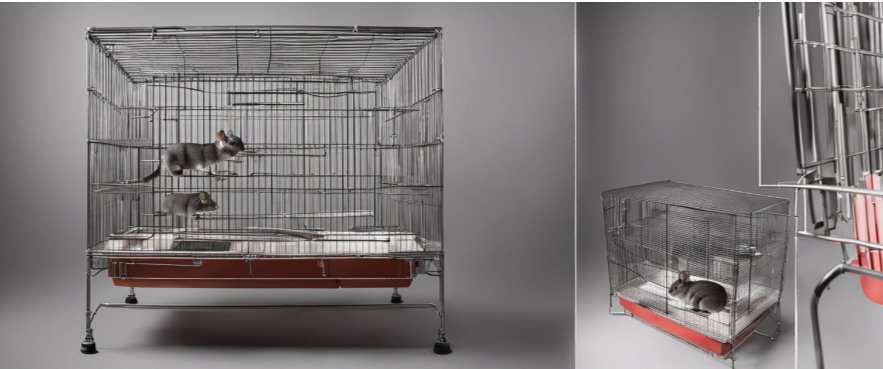
When it comes to choosing the material for your chinchilla’s cage, there are a few options available. The most common materials for chinchilla cages are plastic, wood shavings, cardboard, and fleece liners.
Plastic cages are popular because they are lightweight and easy to clean. However, it’s important to choose a high-quality plastic that is safe for your chinchilla.
If you want to opt for an even better material, you can choose a whole metal cage so that it doesn’t contain any plastic parts.
Read also: 5 Best Chinchilla Cages: Top Picks and Ultimate Guide [year]
Wood shavings are another popular option, especially for those who prefer a natural look for their chinchilla’s cage.
However, it’s important to note that wood shavings can be difficult to clean and may require frequent replacement since chinchillas have the habit of chewing.
Importance of quality
Choosing a high-quality cage is essential for your chinchilla’s health and well-being. A well-made cage will provide a safe and comfortable environment for your chinchilla to live in.
When selecting a chinchilla cage, it’s important to consider the quality of the materials used in its construction. A sturdy and durable cage will provide better protection for your chinchilla and last longer than a cheaply made cage.
For example, a well-ventilated cage will provide fresh air and prevent the buildup of harmful bacteria and odors.
A cage with ample space and climbing opportunities will allow your chinchilla to exercise and engage in natural behaviors.
Cage cleaning and maintenance
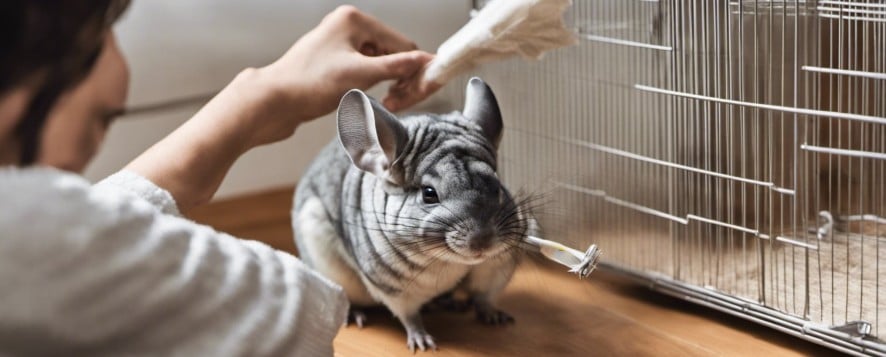
Keeping your chinchilla’s cage clean is essential for their health and wellbeing. Regular cleaning and maintenance of the cage will help prevent the buildup of bacteria, fungi, and other harmful substances that can cause respiratory problems and other health issues.
Regular cleaning routine
We recommend cleaning your chinchilla’s cage on a daily basis. This includes removing any uneaten food, soiled bedding, and feces.
You should also wipe down any surfaces that your chinchilla comes into contact with, such as shelves and ledges. A litter box can be used to make daily cleaning easier and more efficient.
In addition to daily cleaning, you should also perform a deep clean of the cage once a month. This involves removing everything from the cage and cleaning all surfaces with a pet-safe disinfectant.
You should also wash any bedding, toys, and accessories that your chinchilla uses.
Choosing the right bedding
Choosing the right bedding material is important for your chinchilla’s comfort and health. We recommend using a bedding material that is absorbent, dust-free, and non-toxic. Some popular options include aspen shavings, paper-based bedding, and fleece liners.
It is essential to avoid using cedar or pine bedding, as these materials contain oils that can be harmful to your chinchilla’s respiratory system.
You should also avoid using clumping cat litter or other materials that your chinchilla can ingest.
Cage environment and placement
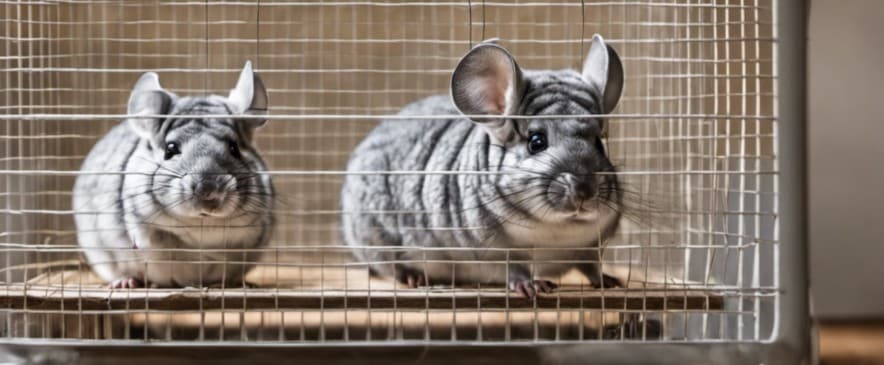
Creating the ideal cage environment for your chinchilla is crucial to their health and happiness. Here are some tips to ensure your chinchilla’s cage is comfortable and safe.
Maintaining ideal temperature
Chinchillas are sensitive to temperature changes and thrive in a cool, dry environment. The ideal temperature for a chinchilla’s cage is between 60-70°F (15-21°C).
Anything above 75°F (24°C) can be dangerous and lead to heatstroke. Keep the cage away from direct sunlight or any heat source, such as a radiator or heater.
If you live in a warmer climate, consider using a fan or air conditioner to keep the temperature down.
Controlling humidity levels
Chinchillas are also sensitive to humidity levels and require a dry environment. The ideal humidity level for a chinchilla’s cage is between 40-60%.
To control humidity levels, avoid placing the cage in a damp area or near a bathroom or kitchen. Use a dehumidifier if necessary.
Cage lighting and placement
Chinchillas are crepuscular animals, meaning they are most active during dawn and dusk. They require a consistent light cycle of 12 hours of light and 12 hours of darkness.
Avoid placing the cage in a room with bright, direct sunlight or harsh artificial lighting. Instead, place the cage in a quieter area away from noise and activity.
When deciding where to place the cage, also consider the noise level and temperature of the room.
Avoid placing the cage near a TV or other loud appliances. Keep the cage away from drafts and direct sunlight. A quiet, cool, and dark room is ideal for your chinchilla’s cage.
Remember to monitor the temperature and humidity levels regularly and adjust accordingly. Your chinchilla will thank you for providing a comfortable and safe home.
When to consider an upgrade
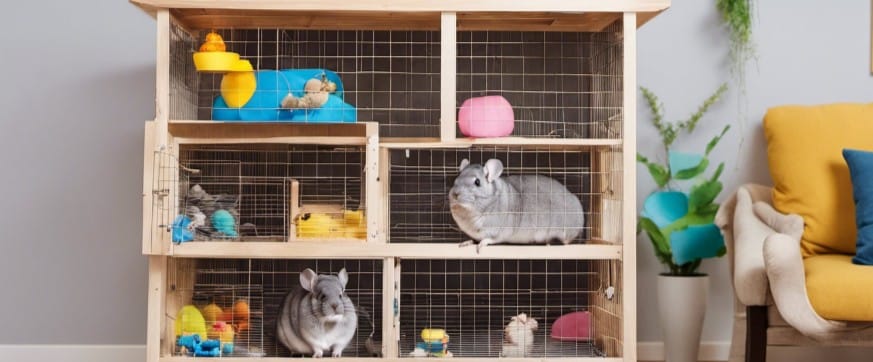
If you notice that your chinchilla is becoming more energetic or seems to be getting bored in their current cage, it may be time to consider an upgrade.
Chinchillas are active animals and need plenty of space to run, jump, and play.
A larger cage will not only provide more space for your chinchilla to move around, but it will also give you more options for adding toys and other accessories to keep your chinchilla entertained.
Having a second cage
If you have a pair of chinchillas and are considering getting a second cage, there are a few things to keep in mind.
First, it is essential to make sure that each chinchilla has enough space to move around comfortably.
Second, it is crucial to consider the personalities of your chinchillas. Some chinchillas may get along well and enjoy having a cage mate, while others may prefer to be alone.
If you are considering getting a second cage, it is important to introduce your chinchillas slowly and carefully to make sure they get along.
Finally, it is important to make sure that your chinchillas are safe from other pets in your home, such as dogs or cats.
Chinchillas are prey animals and can be easily frightened.
Make sure that your chinchillas are in a secure location where they will not be disturbed by other pets.
How big of a cage do you need for two chinchillas?
The minimum cage size recommended for two chinchillas is:
- For a single-level cage, it should be at least 6 feet long by 3 feet wide and 3 feet tall. This provides around 54 square feet of floor space.
- A multi-level cage like a double Critter Nation style ferret nation is better suited for two chins. It needs to be at least 48x24x24 inches to allow adequate room. This works out to approximately 80-100 square feet total space.
However, larger is always better when housing multiple chinchillas. They need space to jump, climb, and play naturally.
Cages should allow at least 1.5 square feet of floor area per chinchilla to prevent overcrowding.
A divided cage may also help reduce stress for two dominant males that cannot be housed together.
The key is providing each chin with enough personal space and room to express natural behaviors. Multi-level designs like the Ferret Nation make the best use of vertical space.
Do chinchillas like hideouts?
Chinchillas generally really enjoy having hideouts and places to hide in their cages. Here are a few key points about chinchillas and hideouts:
- Chinchillas are prey animals in the wild, so they have a natural instinct to feel safe hiding from potential predators. Having a hideout lets them follow this instinct.
- Hideouts allow chinchillas to retreat when they feel stressed, scared, or want some alone time away from other cagemates. This helps reduce their overall stress levels.
- Chinchillas love chewing on things, and hideouts give them a dedicated place to chew safely without damaging other cage furnishings. The chewing helps wear down their ever-growing teeth.
- Hideouts provide enrichment and encourage natural burrowing behaviors. Chins will happily curl up and sleep inside hideouts during the day.
- Multiple hideouts are good, so chinchillas don’t feel overcrowded if cagemates want to use the same space.
- Common hideout options include plastic igloos, hollowed-out logs, hanging hides, or even cardboard boxes with a hole cut in.
So, in short, yes, most chinchillas thoroughly enjoy having a hideout or two in their cages for stress relief and natural behaviors. It’s an important
Summary
Before we move on to the conclusion, we’ve summarized this article into a short list of key points for you to remember:
- A good size cage for a chinchilla should be at least 2 feet by 2 feet by 2 feet.
- A good size cage for a pair of chinchillas should be at least 3 feet by 2 feet by 2 feet.
- The cage should be made of sturdy and safe material, such as metal wire or plastic, and have multiple levels and platforms for your chinchilla to climb and explore.
- Chinchillas need a cage that allows them to use their natural abilities.
- Chinchillas are burrowing animals and need a safe, comfortable space to rest and hide.
Conclusion
When it comes to chinchilla cages, size matters. A larger cage will provide more space for your chinchilla to move around and play, as well as offer more options for toys and accessories.
We hope you’ve found this article helpful in understanding the size of the cage that your chinchilla needs.
Provide a safe, secure, and comfortable home for your chinchilla, and they will thank you with lots of love!
Want to learn more about chinchillas?
Ready to boost your knowledge to the next level? If so, check out the articles below:


